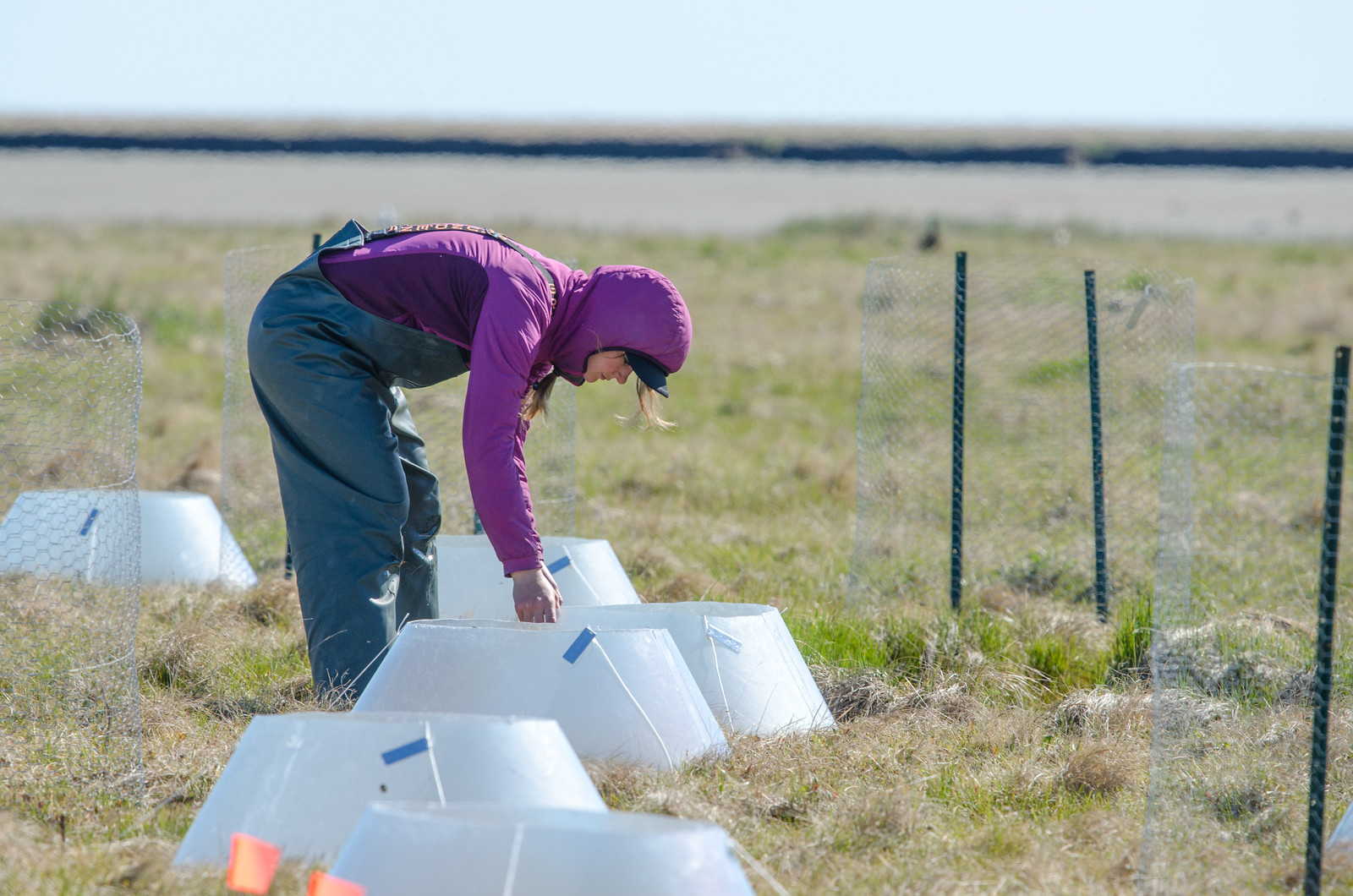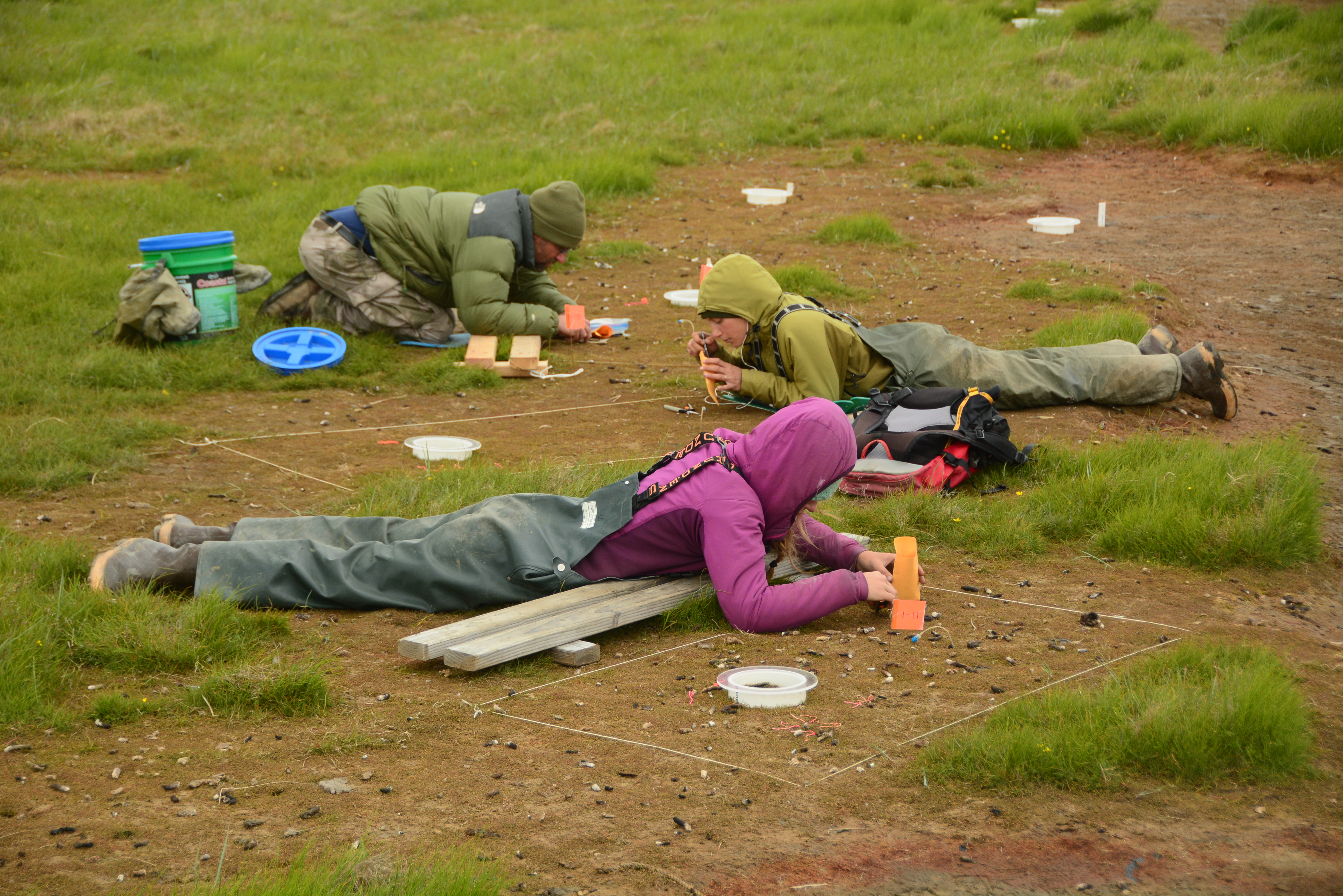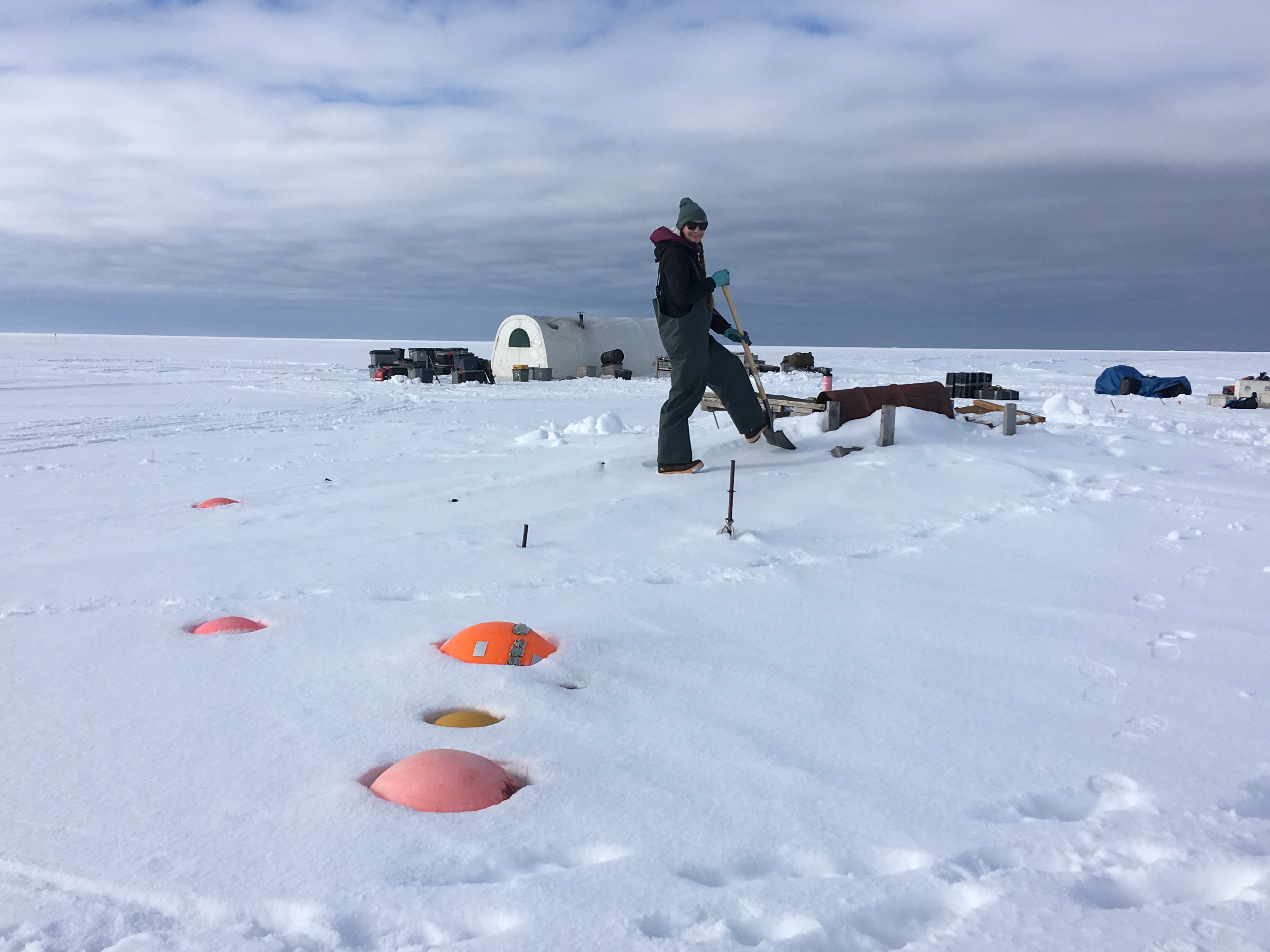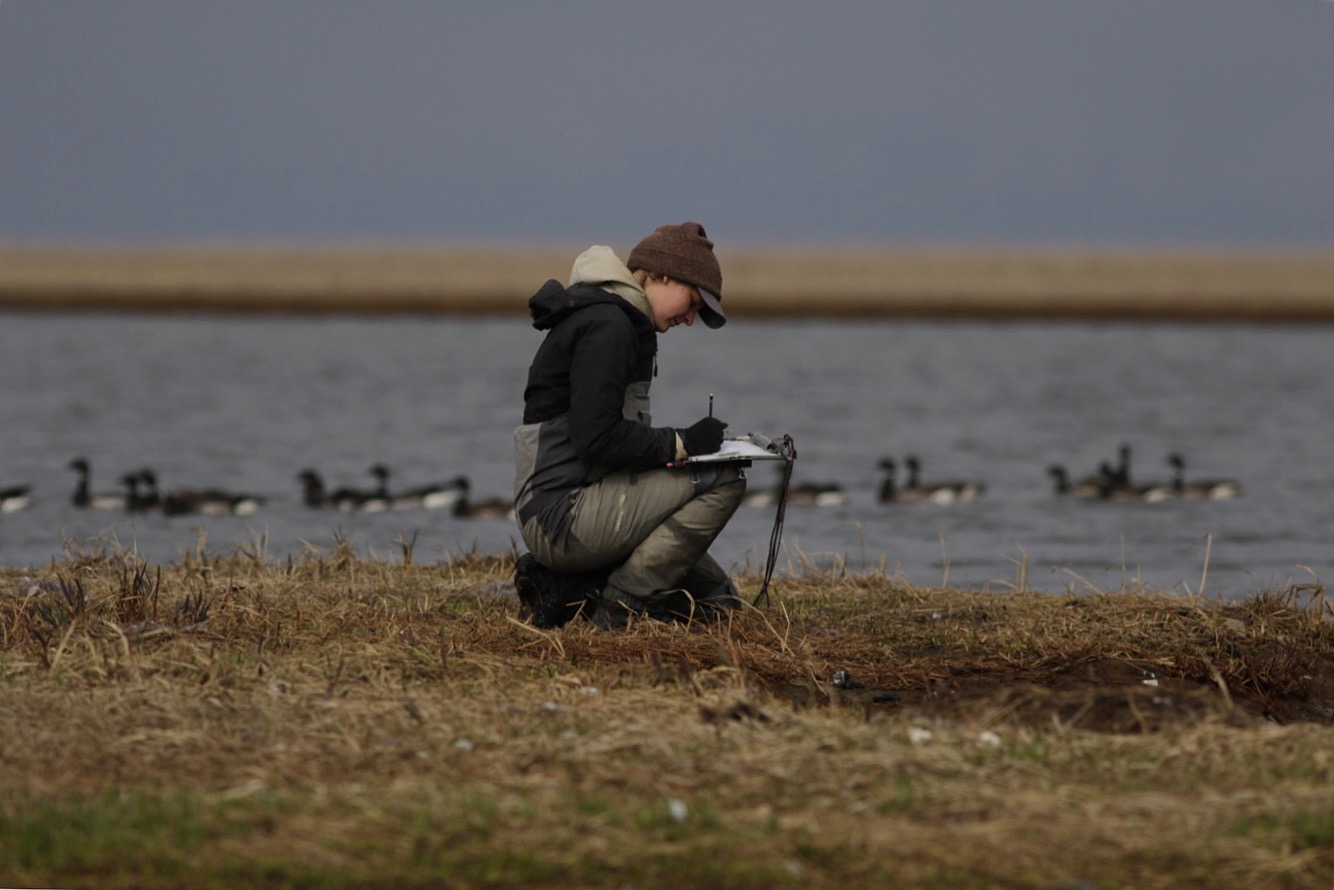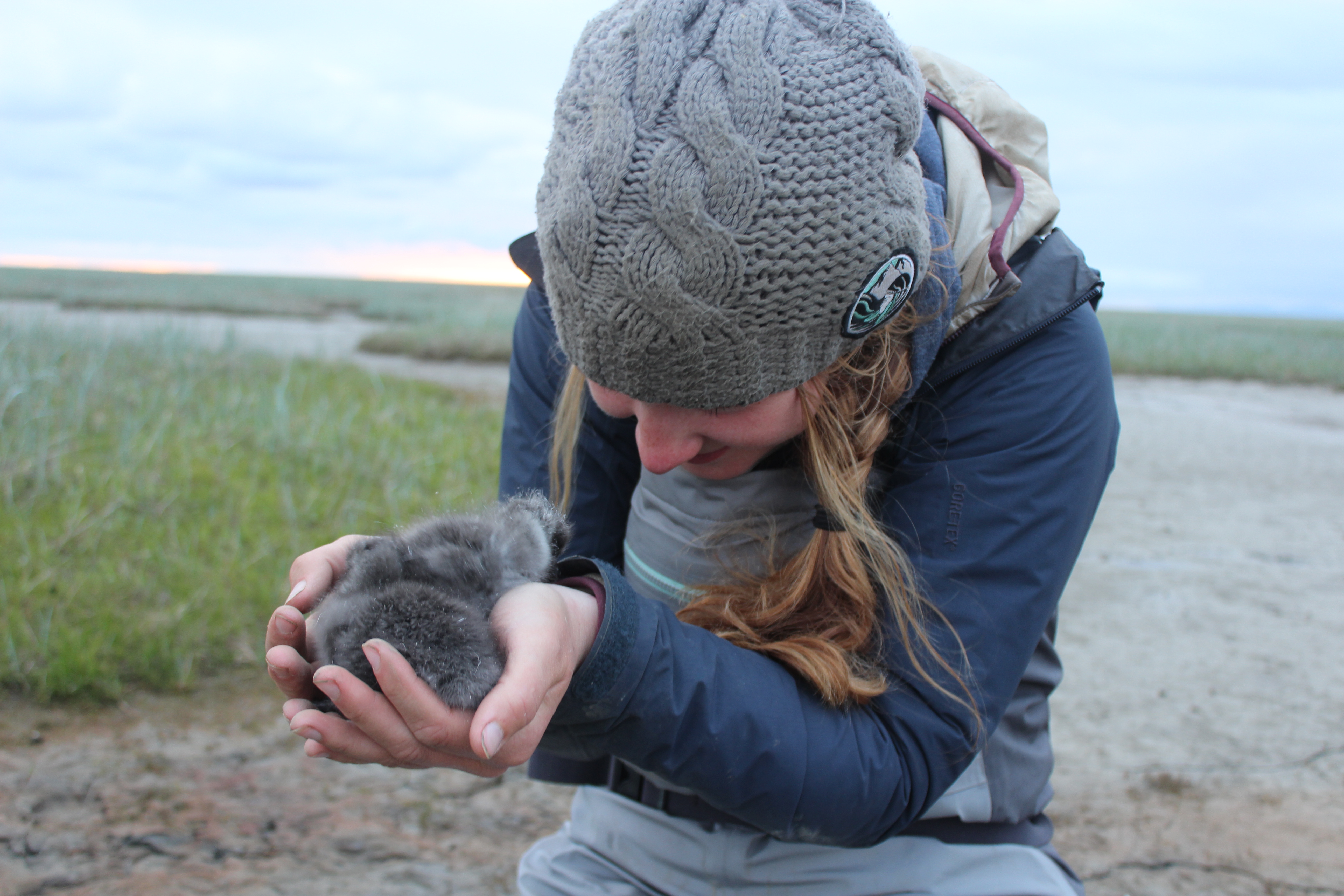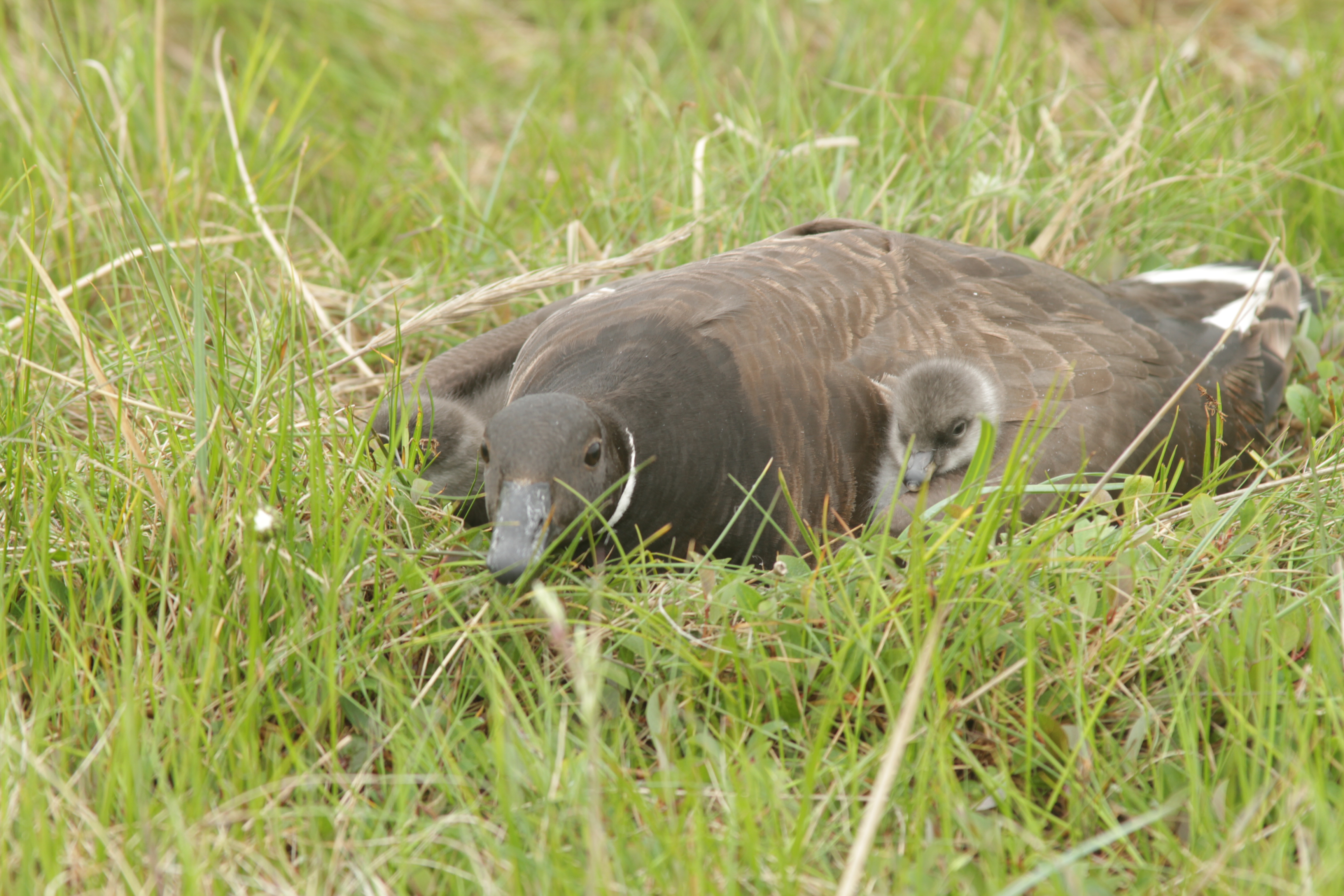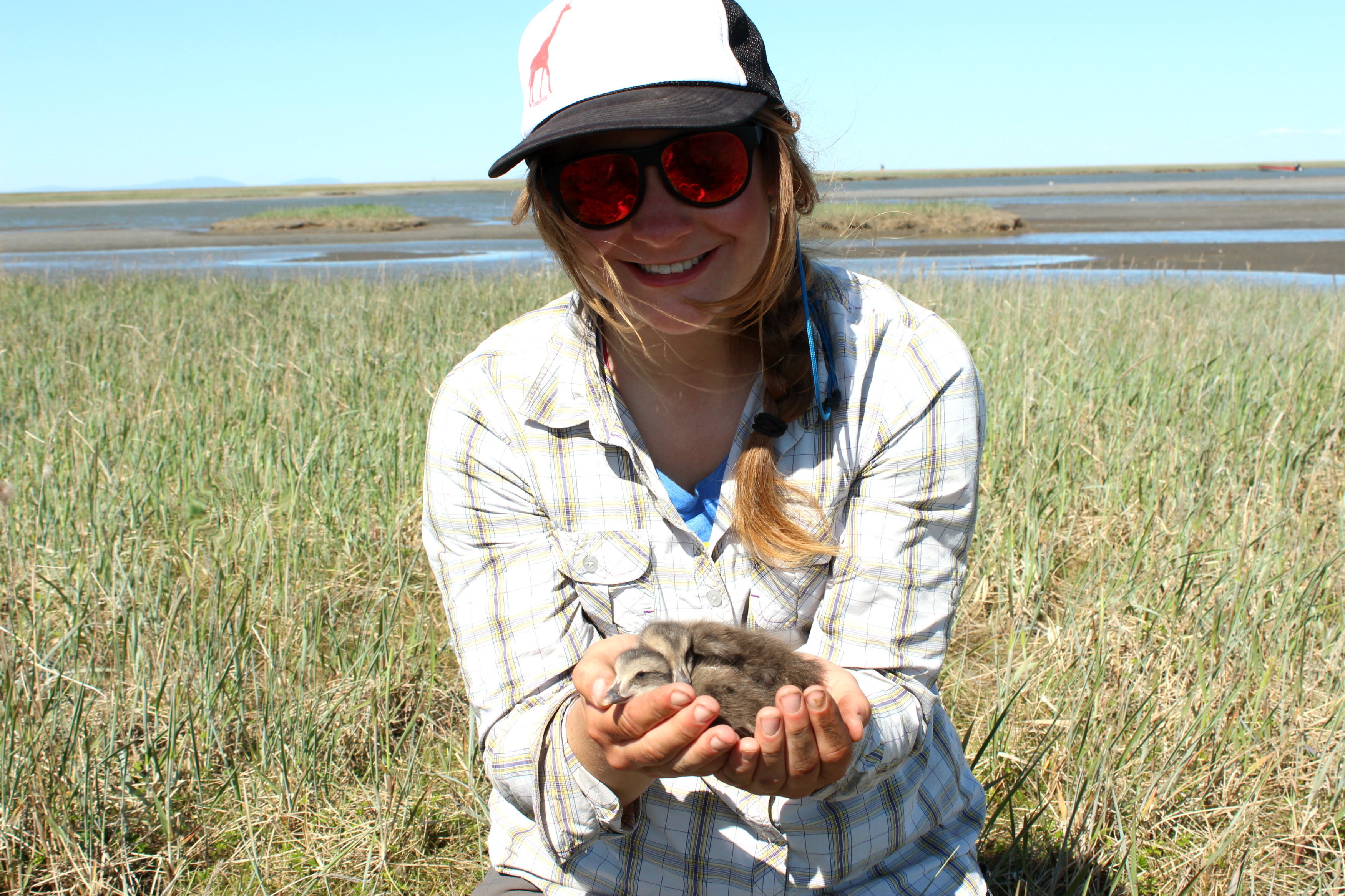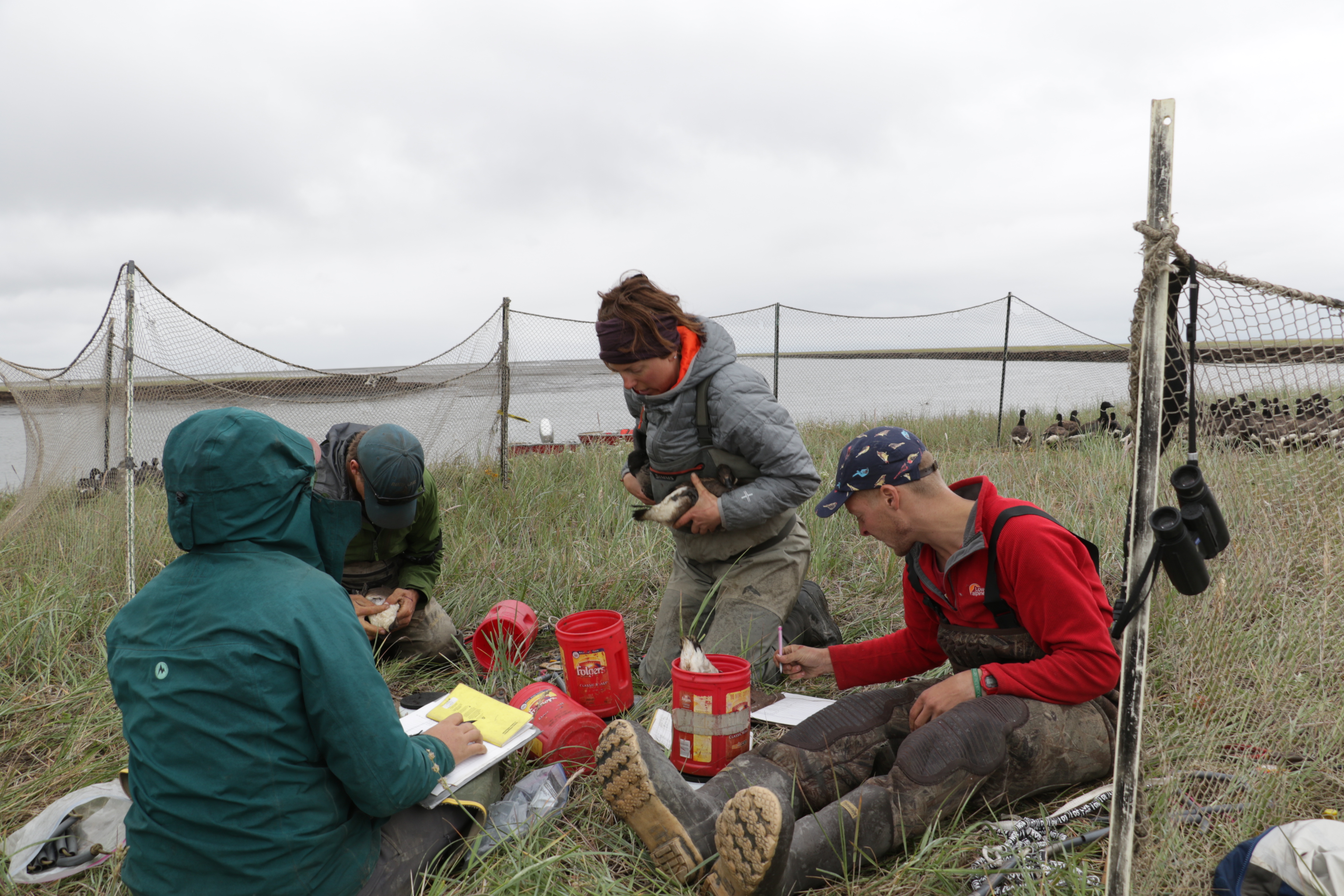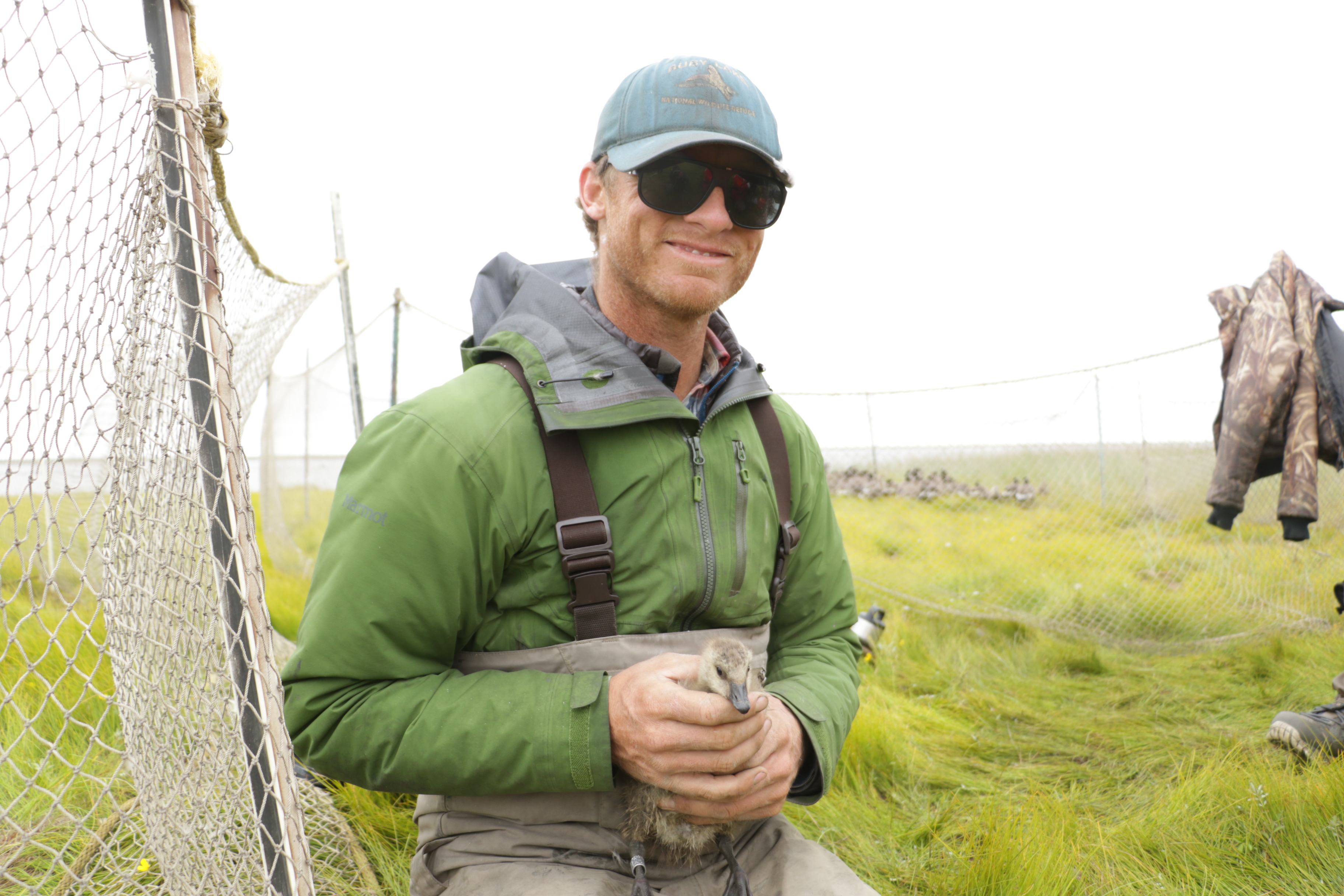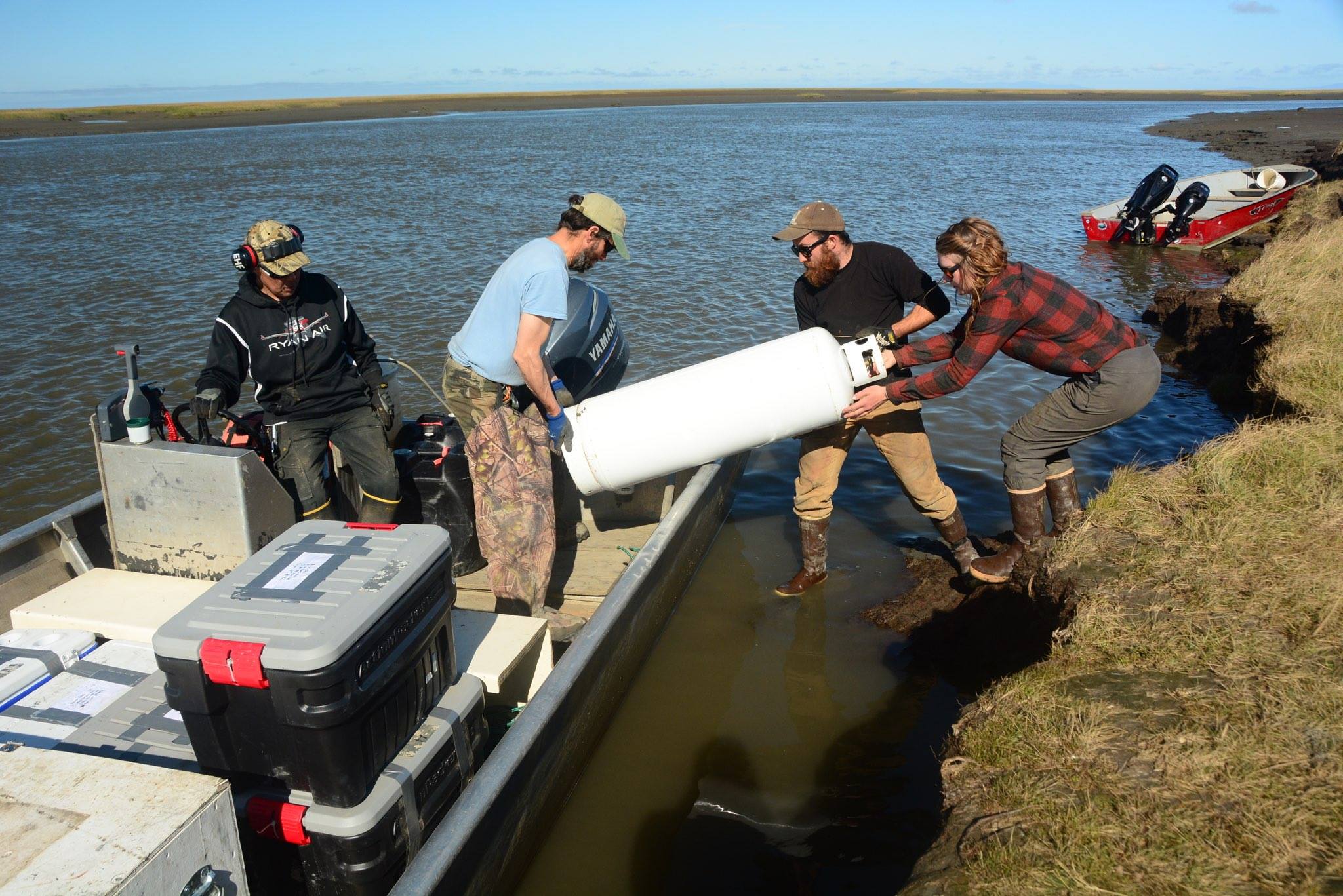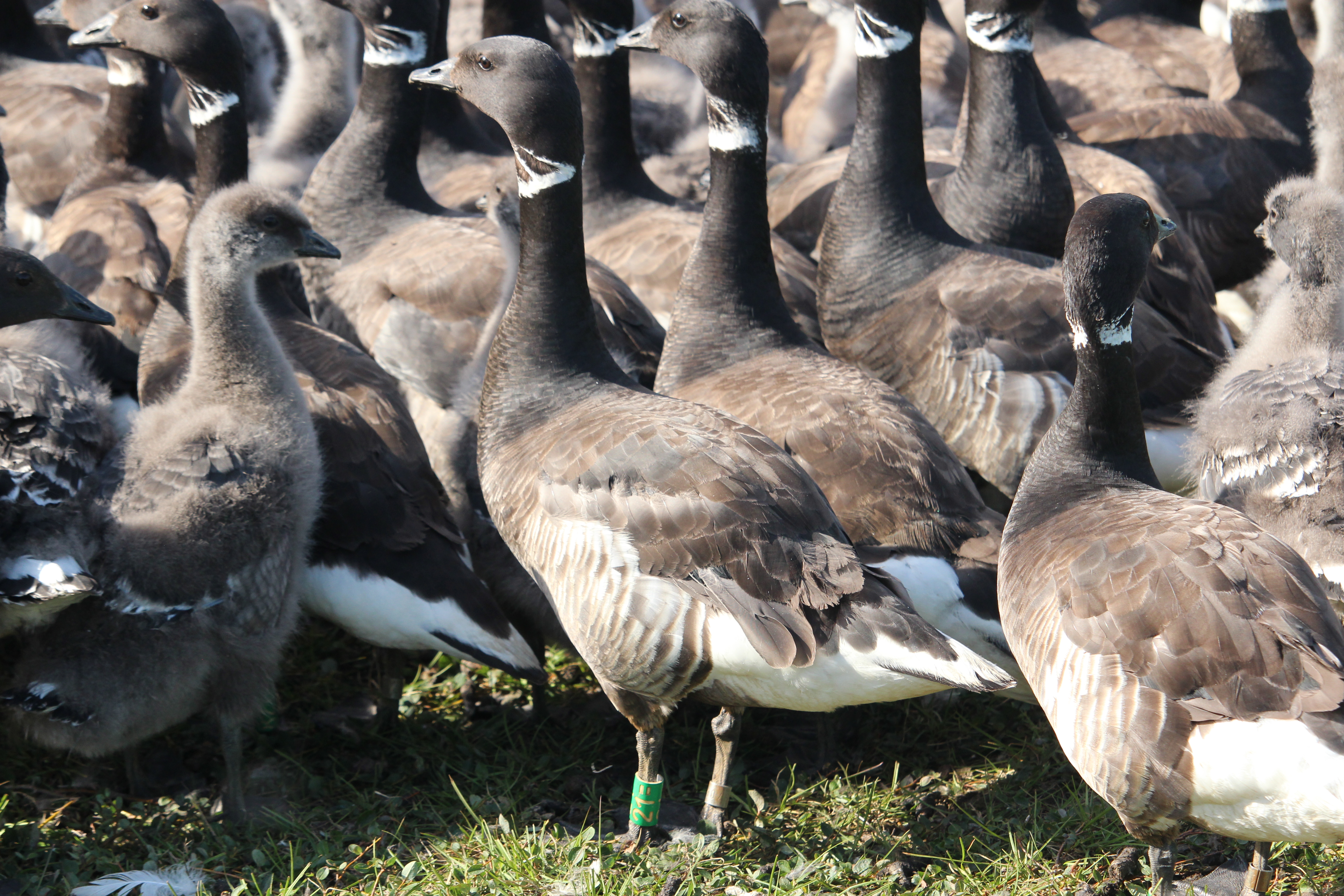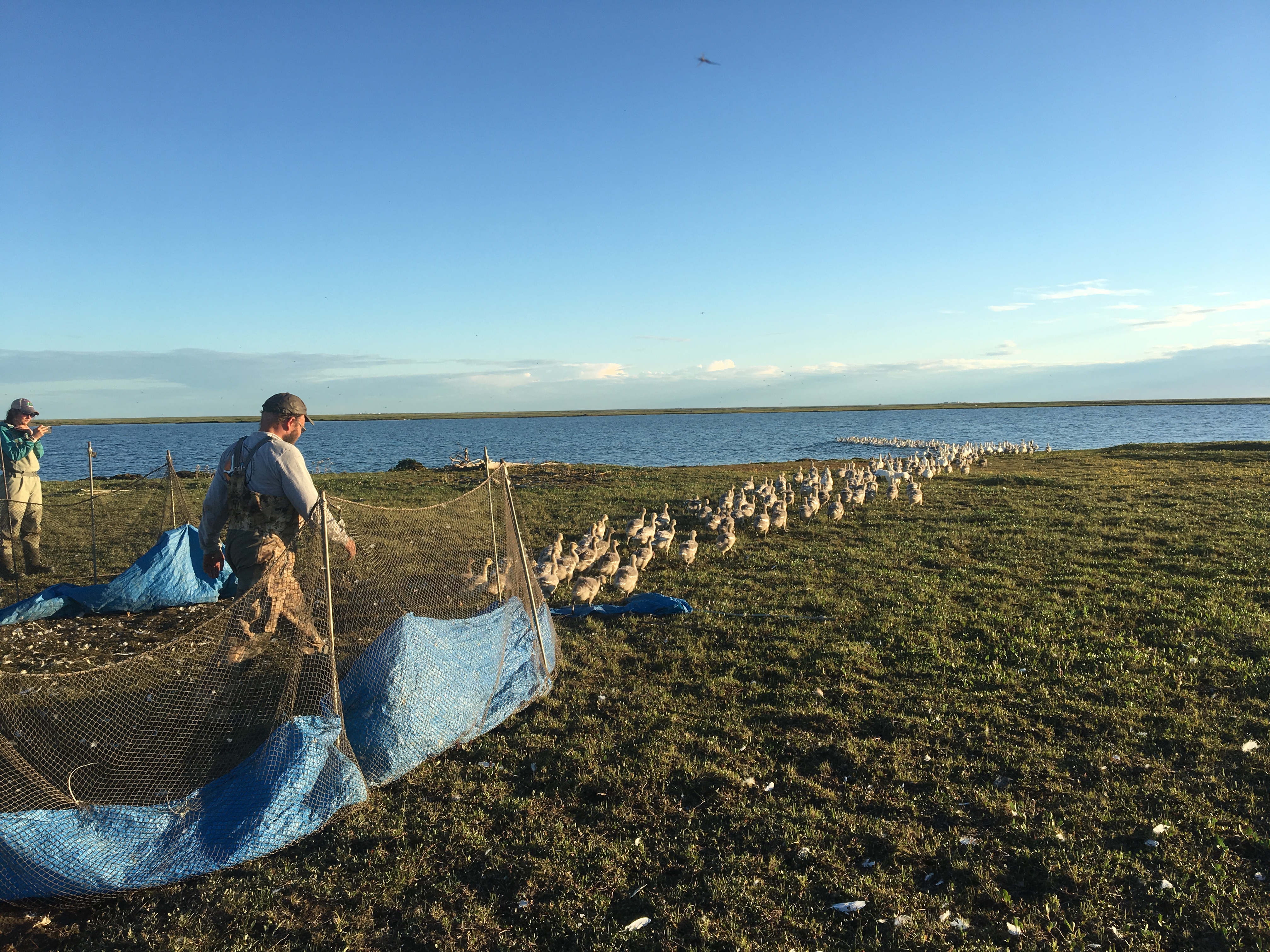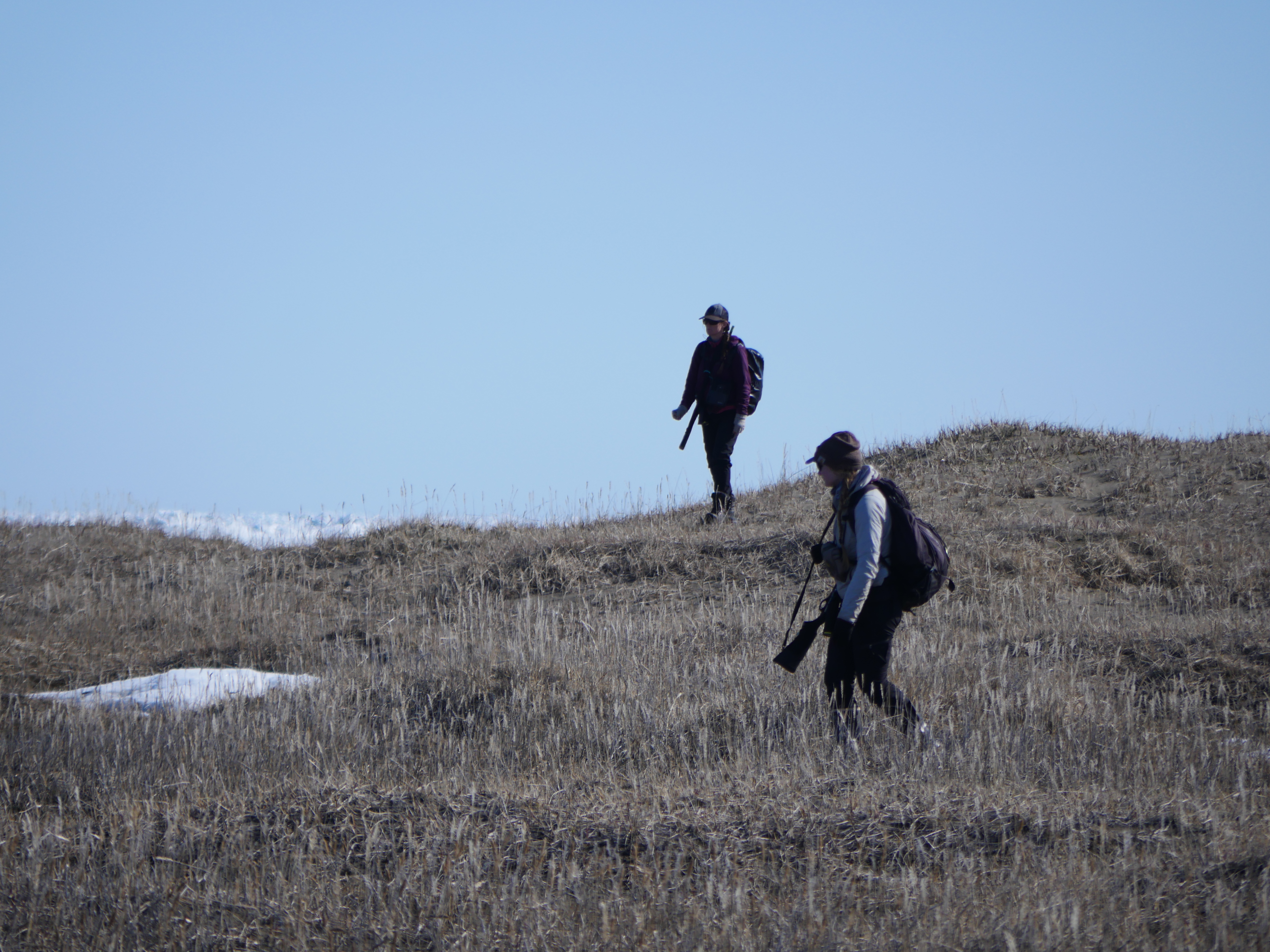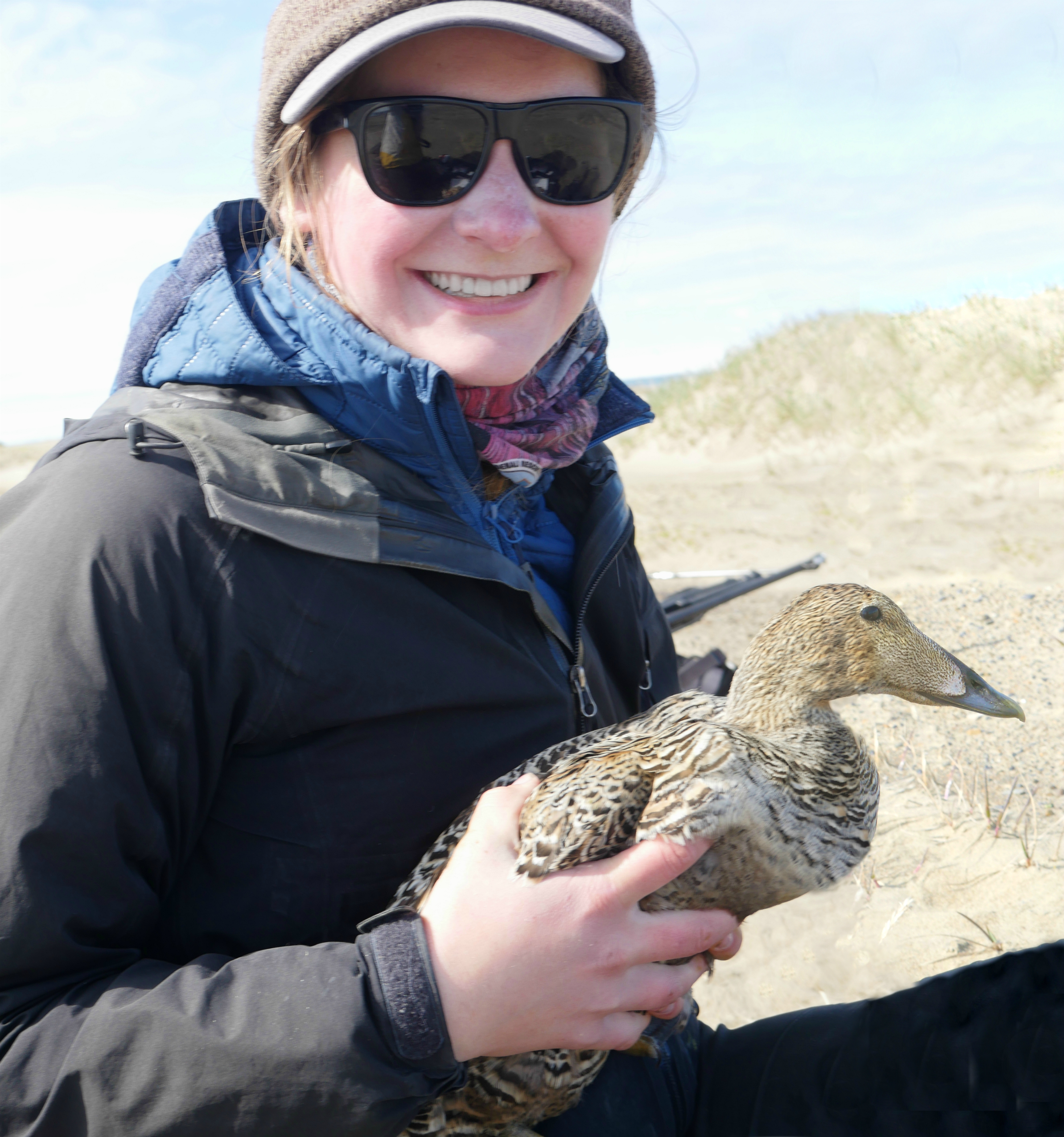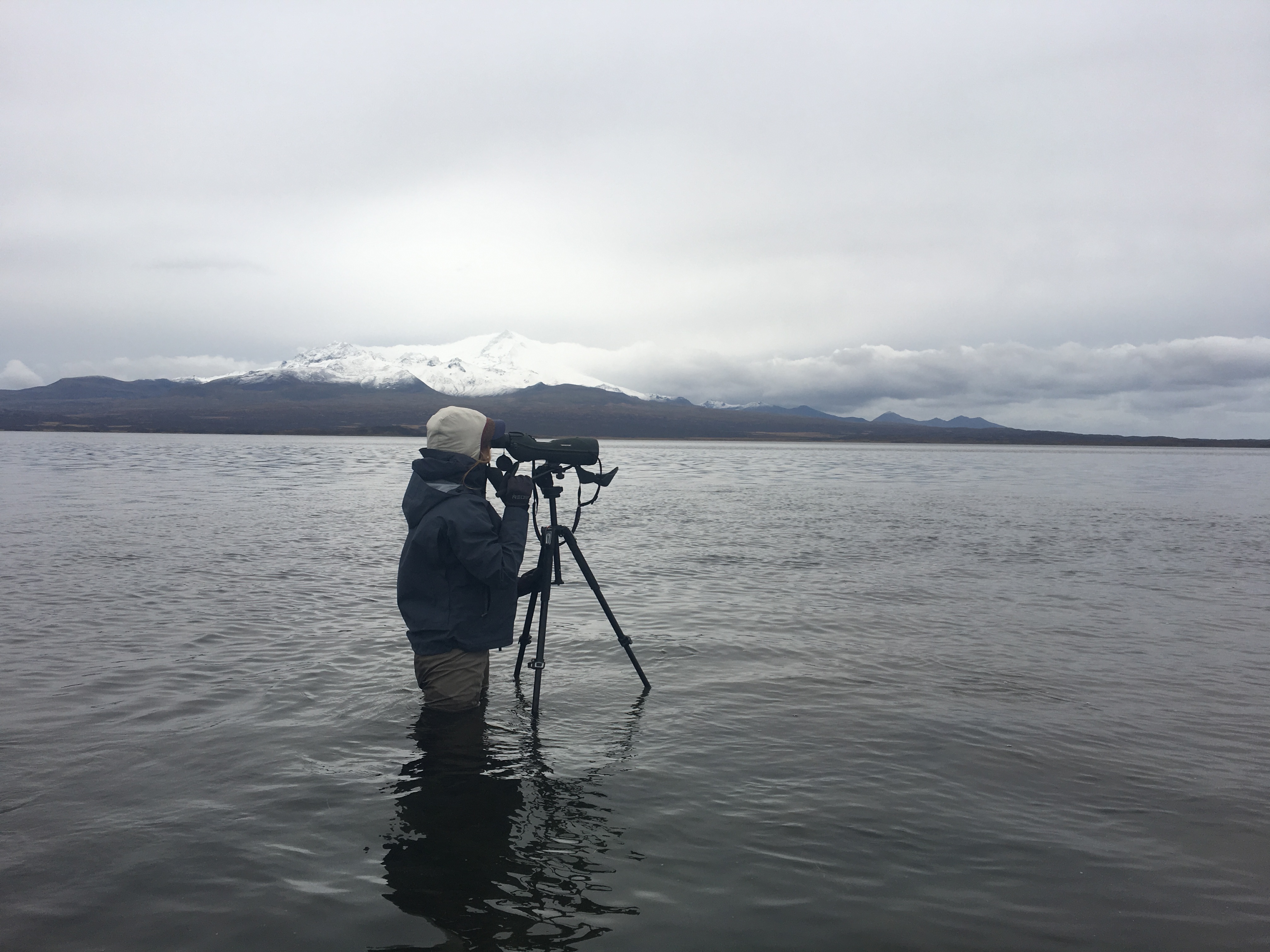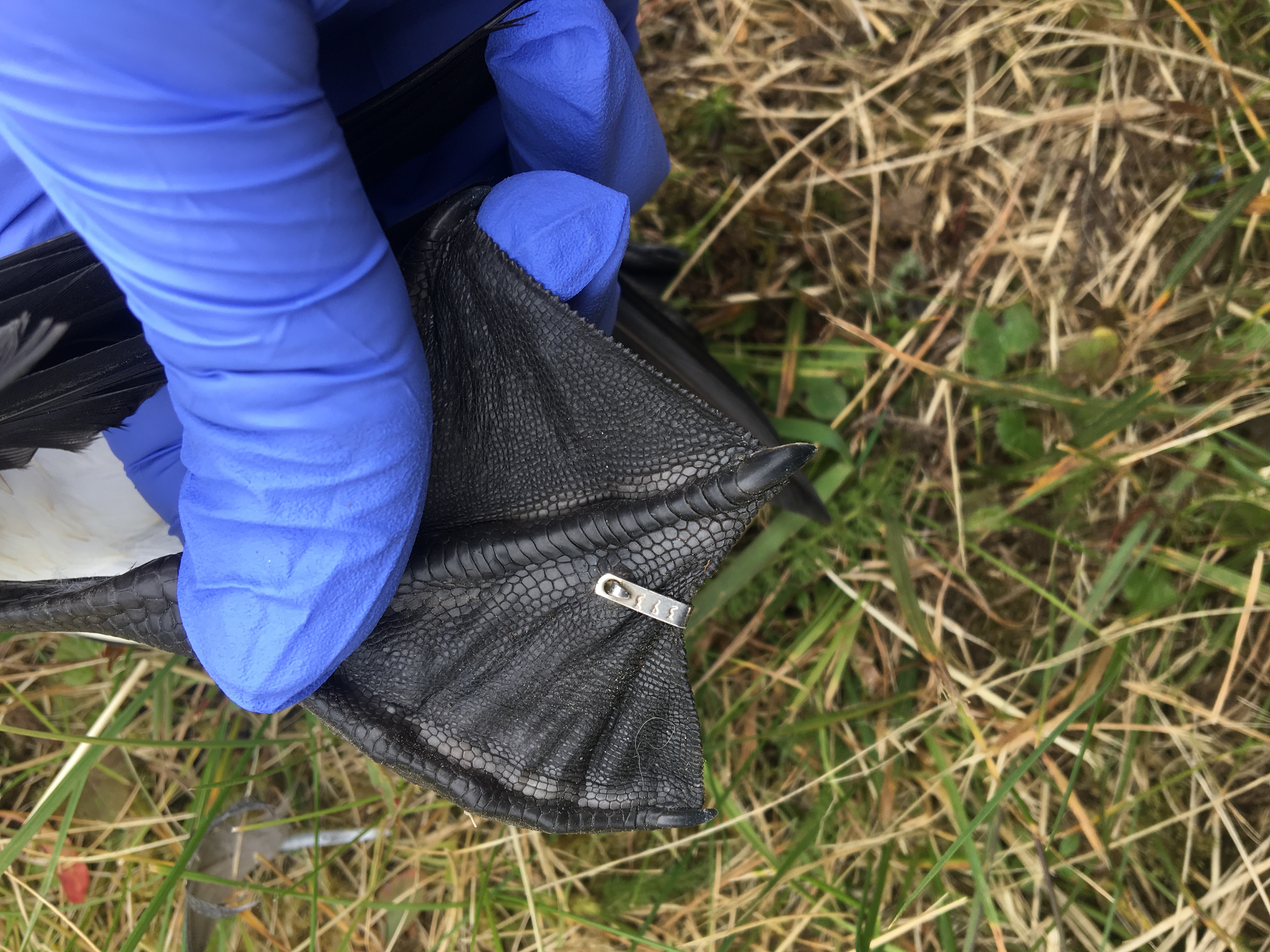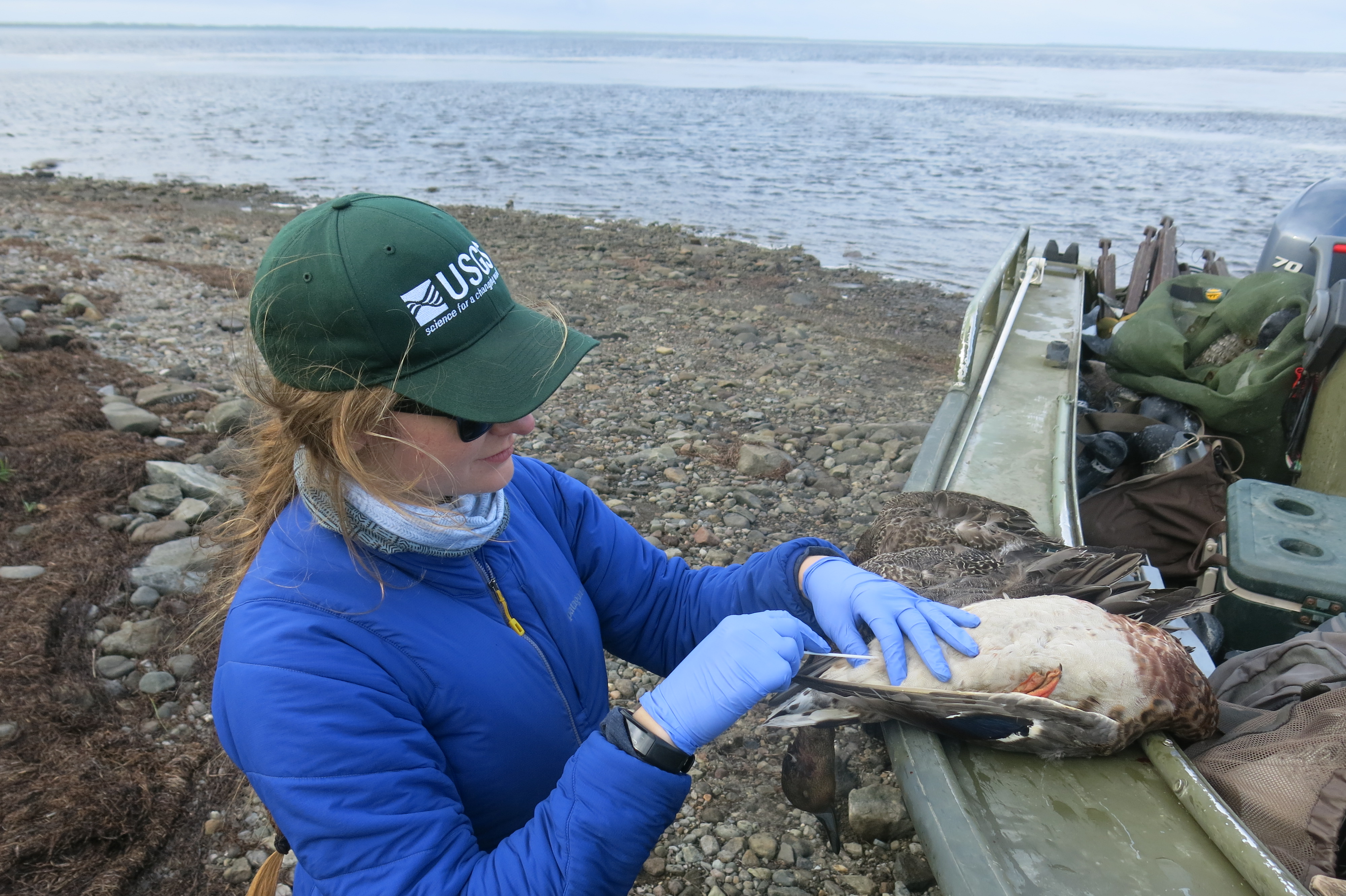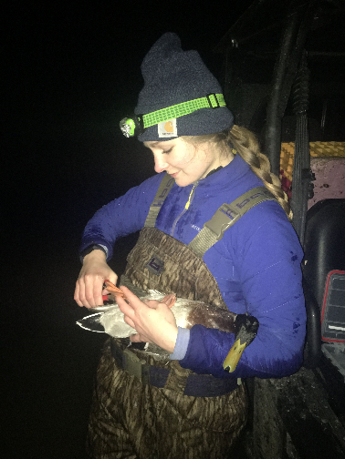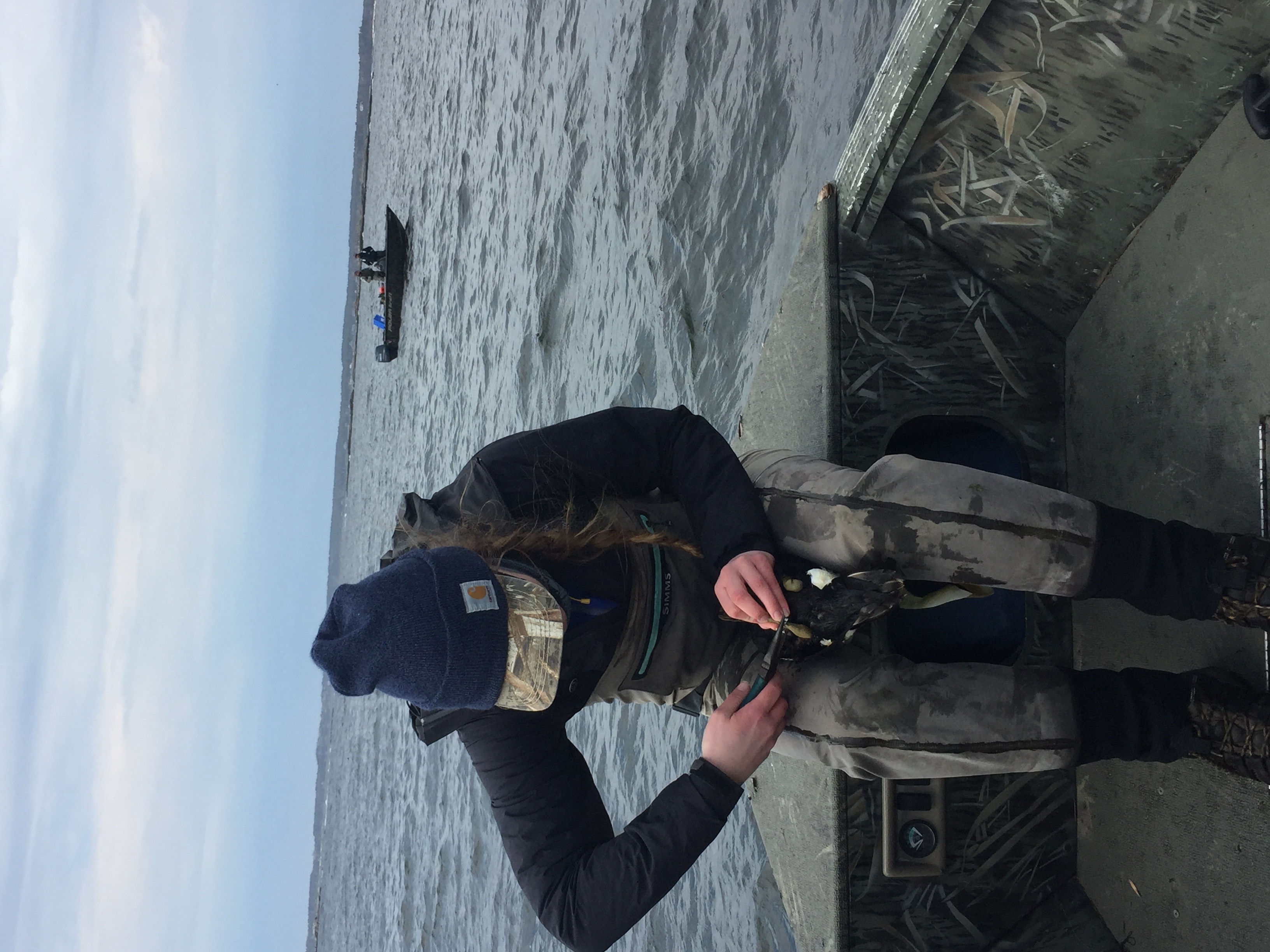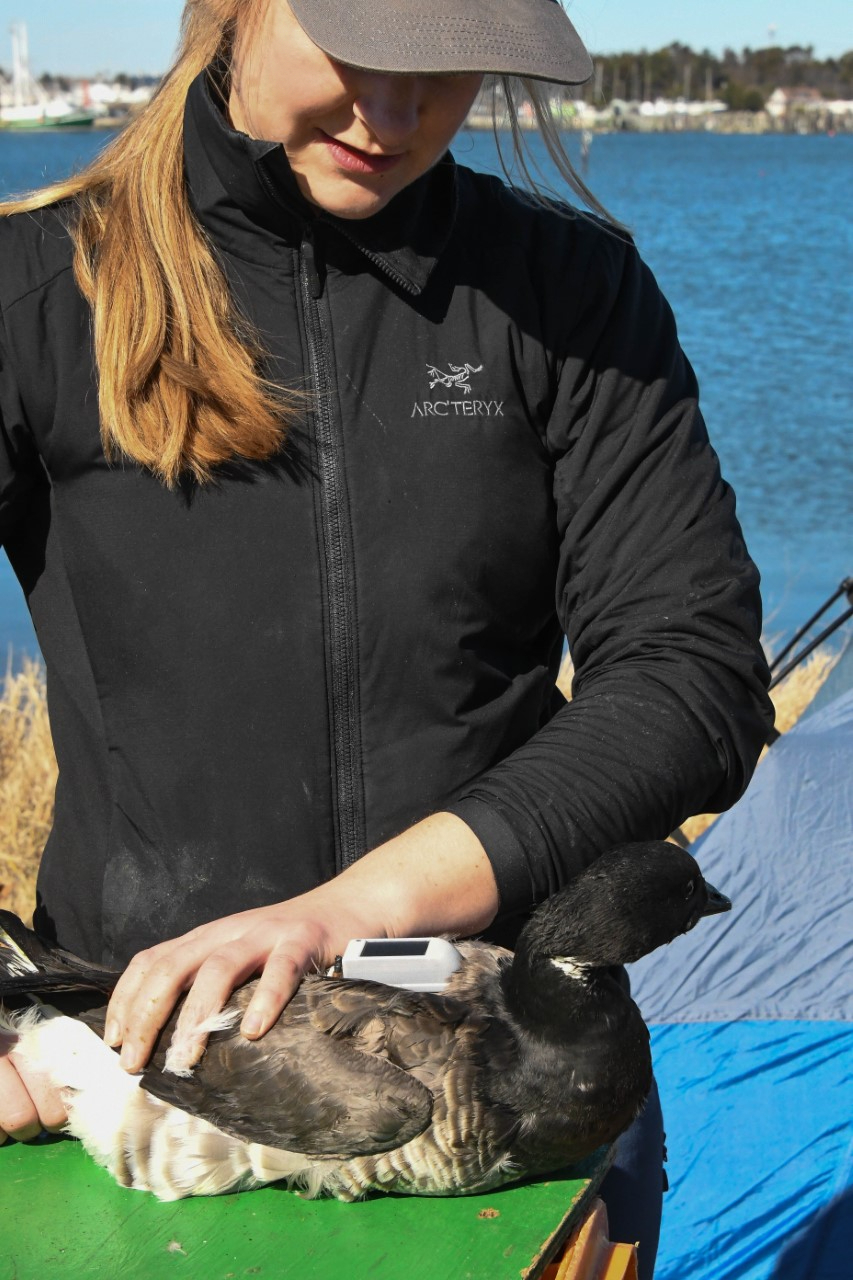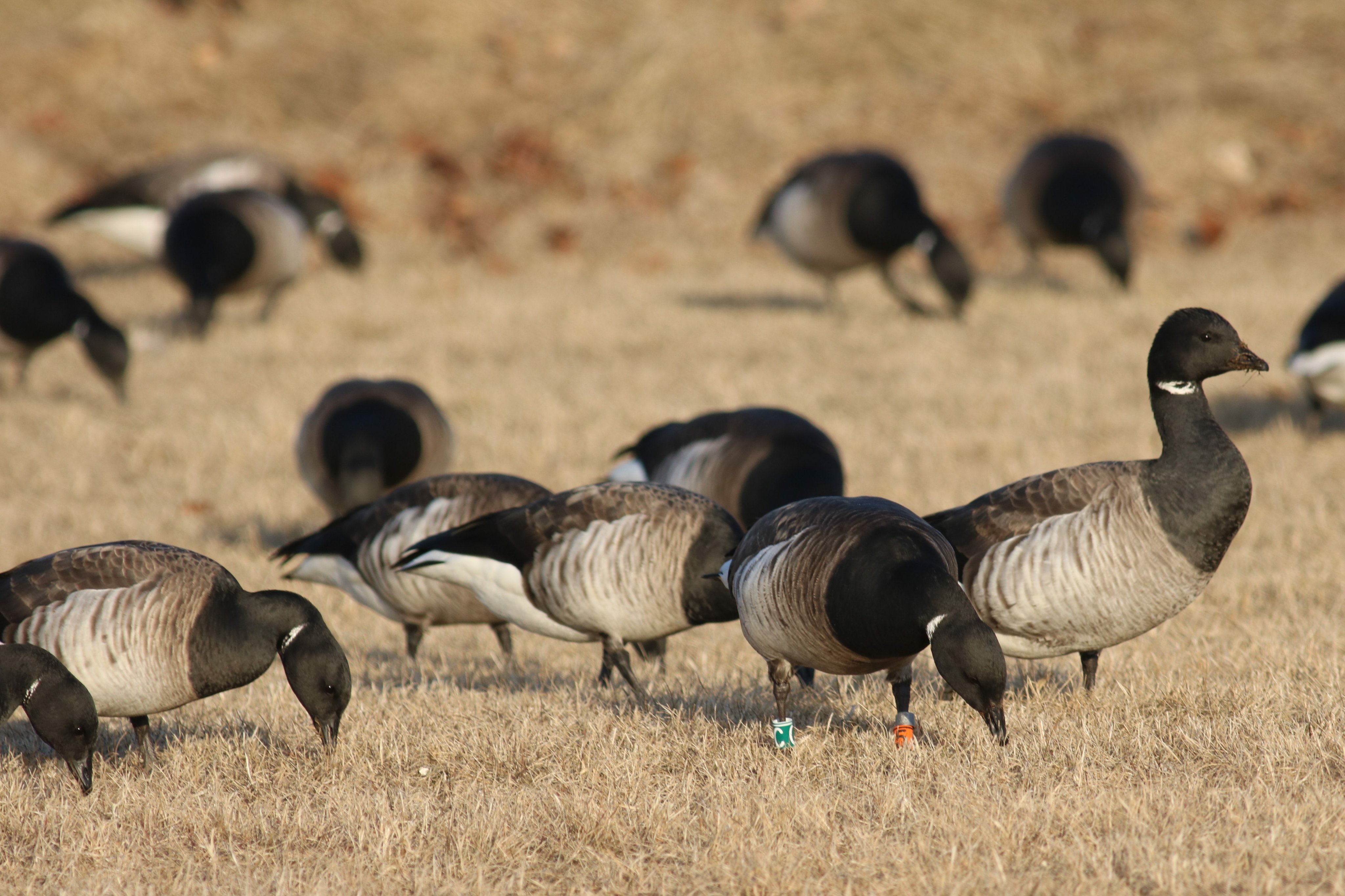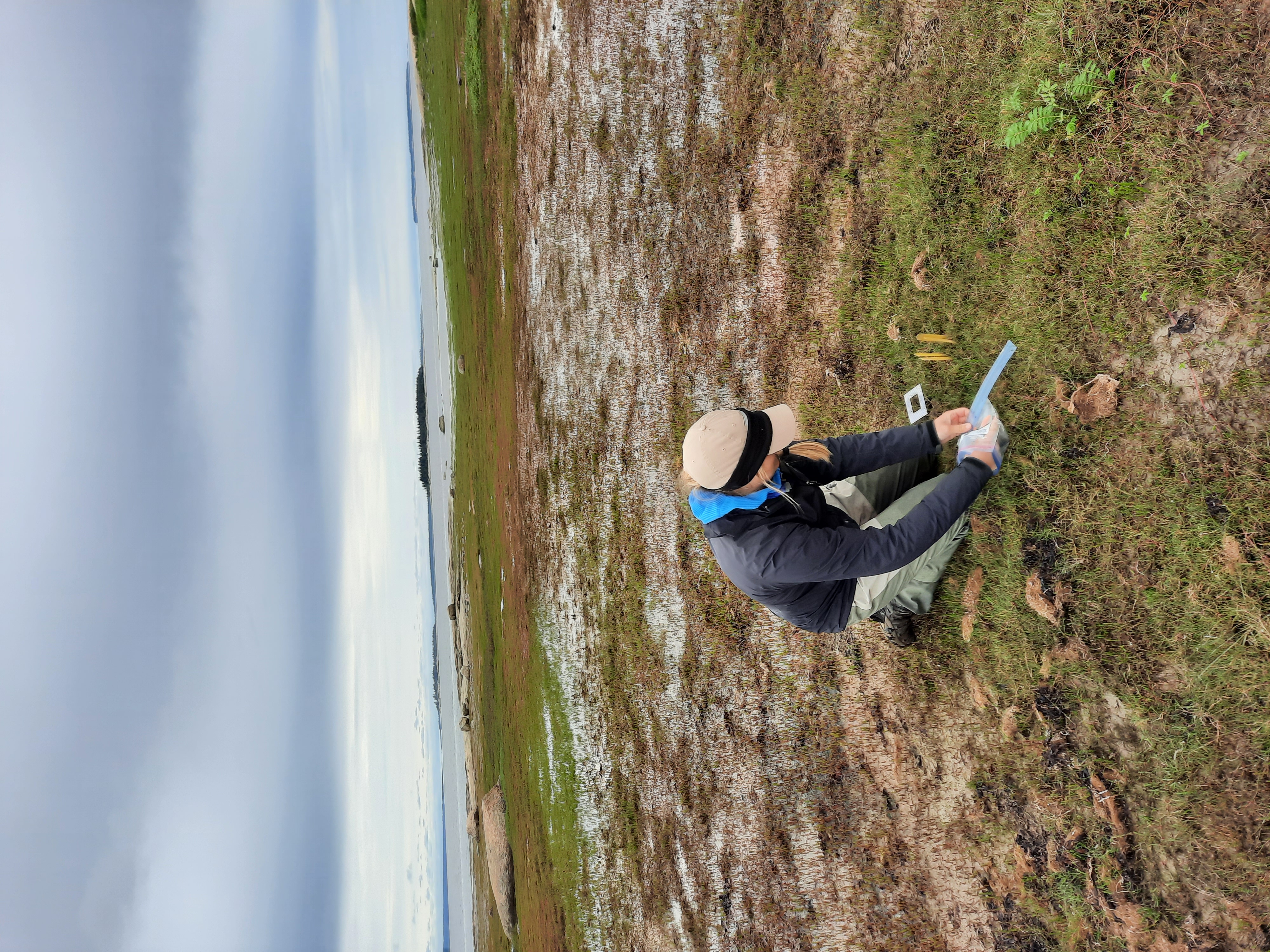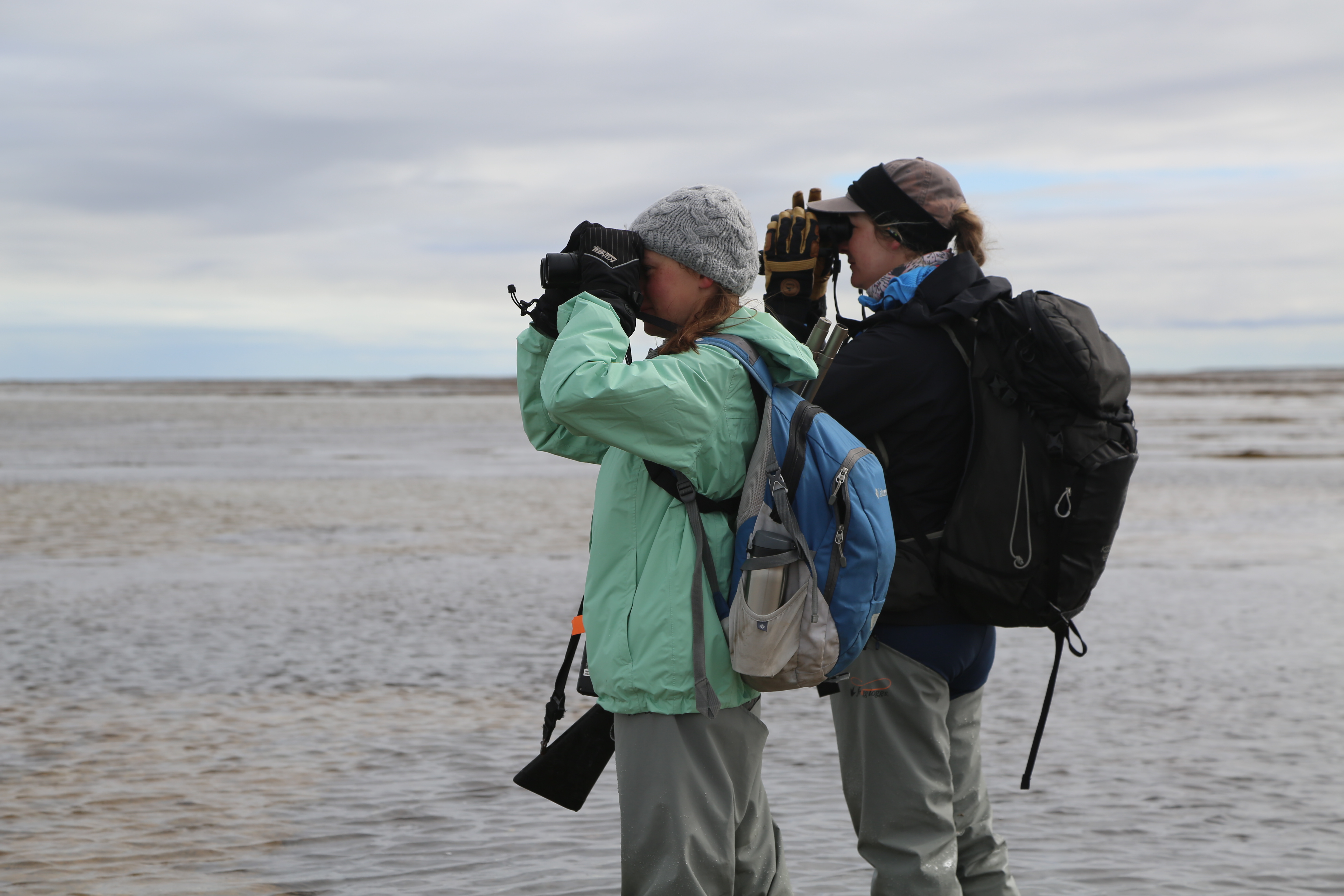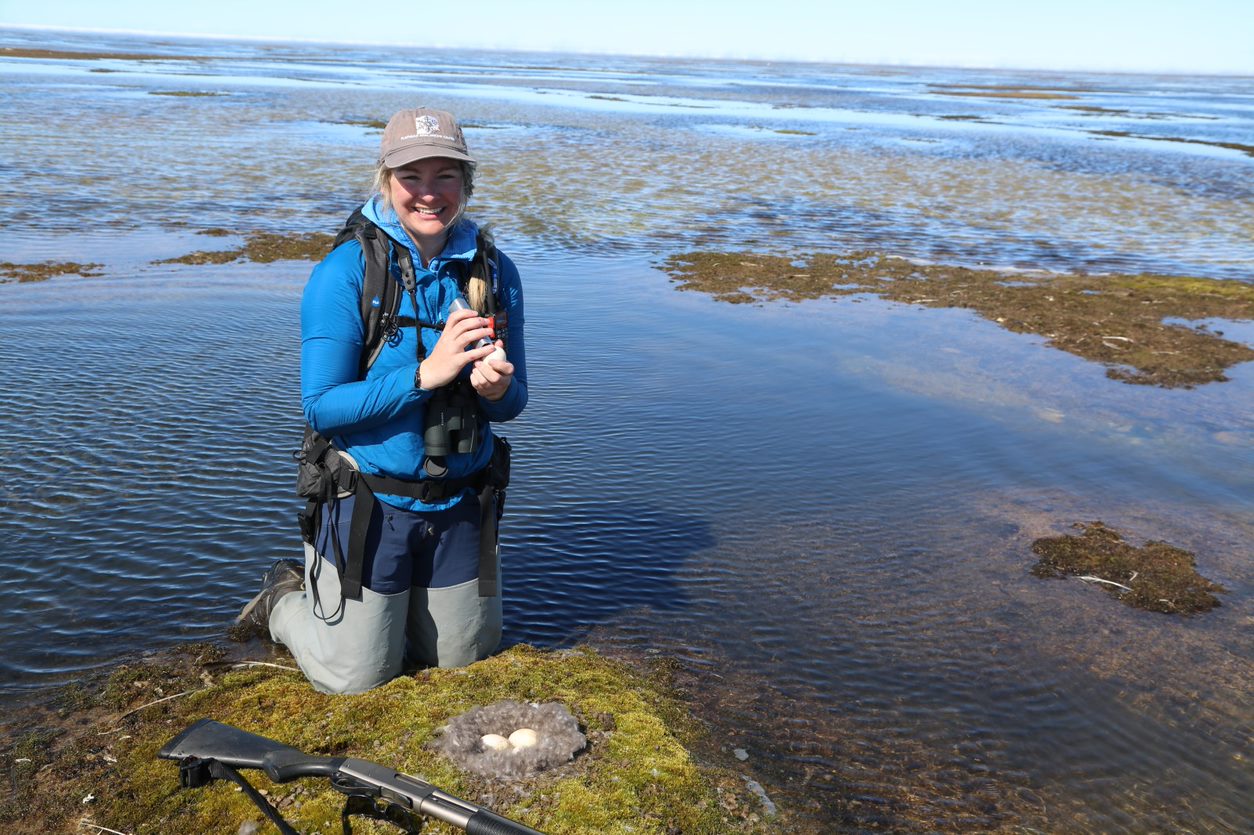About
I am currently a PhD student at University of Saskatchewan. Over the last decade, field research has taken me from the barrier islands of Kasegaluk Lagoon on the North Slope of Alaska to the bottomland hardwoods of Arkansas's Mississippi Alluvial Valley, from the peaks of Glacier National Park to the coast of the Gulf of Maine. My previous work primarily focused on waterfowl species including geese (Pacific black brant), sea ducks (Common eiders), and dabbling ducks (Midcontinent mallards), but much of my work incorporates broader ecological themes such as the impact of phenologic mismatch nutrient quality of forage plants. I code in Program R, and I enjoy teaching others programming, data visualization, and statistical skills. I am passionate about fostering an inclusive, welcoming culture in the field of waterfowl ecology.
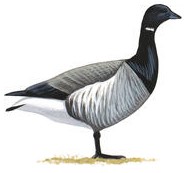
PhD Research
I am advised by Dr. Mitch Weegman on a project with an incredible group of international collaborators. Our work is focused on movement and behaviour of Atlantic brant throughout their annual migratory cycle, and we are specifically interested in understanding movement and habitat use within spring and fall staging areas on James Bay.
Over the last two decades, the Atlantic brant population has fluctuated around 150,000 individuals, following a “boom and bust” cycle of productivity. During the same period, Cree land users along the eastern coast of James Bay (Eeyou Istchee) have noted a decline in the number of Atlantic brant using historically important staging areas. We are leveraging data from more than 200 tagged Atlantic brant to understand how migration characteristics (stopover timing, duration), behavior (proportion of time feeding, habitat used), and weather patterns (precipitation, temperature, winter severity) influence reproductive success (productivity) both directly and through carry-over effects for a full annual cycle perspective. A full annual cycle understanding will allow us to connect effects of land use and climate change throughout the annual cycle, linking wintering, staging, breeding areas for greatest conservation focus and impact.Curriculum Vitae
Lindsay Gray Carlson
Pronouns: she/her
Certified Ecologist, Ecological Society of America
Leadership Team Member, 500 Women Scientists
Founding Member, Women in Waterfowl
lindsaygcarlson@gmail.com
Education
PhD Student, Ecology
January 2022-present
University of Saskatchewan, Department of Biology
Advisor: Dr. Mitch D. Weegman
Master of Science, Ecology
2015-2017
Utah State University, Department of Wildland Resources
Advisor: Dr. Karen H. Beard
Bachelor of Science, Biological Science
2011-2014
Montana Technological University, Department of Biological Science
Award: Outstanding Graduate from the Department of Biological Science (2014)
Quantitative Research
Graduate Research Assistant
2022-present
University of Saskatchewan, Ducks Unlimited Canada
- Ascribing the importance of Atlantic brant staging areas for holistic conservation planning
Quantitative Research Associate
2019 - 2021
Gulf of Maine Research Institute
- Trends in growth and survival of Carlin-tagged Atlantic salmon
- Evaluating community adaptive capacity to shifting species distributions based on commercial reliance, emerging species, and socio-economic indicators
- Methods to evaluate leading and trailing edges of species distributions
Program Technician
2017 - 2019
University of Arkansas Forest Resources Center
- Wintering harvest distribution and migration chronology of Arkansas-banded mallards
- Wintering distribution and diet composition of midcontinent Arctic nesting geese (Code sample from analysis)
Graduate Research Assistant
2015 - 2017
Utah State University
- Effect of phenologic mismatch on grazing lawn forage quality in the Yukon-Kuskokwim Delta (Outreach curriculum here)
- Direct effects of warming increase woody plant abundance in a subarctic wetland
Undergraduate Research Intern
2014
Montana Institute on Ecosystems
- Effect of fire frequency on forest understory communities in the Bob Marshall Wilderness
Field Research
Biological Science Technician
2018
United States Geological Service, Alaska Science Center
- Environmental incubation time and transmission of avian influenza viruses
- Age ratios of Pacific black brant staging in Izembek Lagoon, AK
Research Technician
2018
Wildlife Conservation Society
- Susceptibility of nesting common eiders to climate and anthropogenic disturbance on Kasegaluk Lagoon barrier islands (National Petroleum Reserve)
Research Technician
2017 - 2018
University of Nevada, Reno
- Pacific black brant nesting ecology and mark-recapture, Yukon Delta NWR, AK
Research Technician
2014
Montana Technological University
- Impacts of climate change on alpine plants at the edges of receding glaciers and snowfields, Glacier National Park, MT
Independent Research
North American Duck Symposium
2019 - Present
- Underemployment and gender-wage inequality for early-career wildlife graduates (Code sample from analysis)
- Confidence and the prevalence of "impostor syndrome" among early-career wildlife graduates
- Co-authors: Sally Yannuzzi, Cheyenne Beach, Casey Setash
American Ornithological Society
2017 - 2018
Student and Postdoctoral Research Award
- Linking forage vegetation characteristics to life history trade-offs for Tutakoke River Colony Pacific black brant broods in the Yukon-Kuskokwim Delta
- Co-author: Cody Deane
Courses and Workshops Taught
Population Ecology - Teaching Assistant, Guest Lecturer, and Lab Instructor (BIOL363/898)
2023
University of Saskatchewan
Ornithology - Teaching Assistant, Guest Lecturer, and Lab Instructor (BIOL458)
2022
University of Saskatchewan
Introduction to Data Analysis in R Workshop
2020
NSF Research Experience for Undergraduates (REU) at GMRI
Introduction to Tidyverse Syntax
2019
GMRI Quantitative Group
Research and Travel Grants
University of Saskatchewan
2024-2026
$48,000 CAD
Dean's Doctoral Scholarship for International Students
Washington Brant Foundation
2025
$2,000 USD
Washington Brant Foundation Scholarship
Ducks Unlimited Canada Institute for Wetland and Waterfowl Research
2023-2025
$15,000 CAD
Dr. Bruce D.J. Batt Fellowship in Waterfowl Conservation
California Waterfowl
2024
$4,000 USD
Dr. Bruce D.J. Batt Fellowship in Waterfowl Conservation
Arctic Goose Joint Venture
2021
$86,000 USD
Improving Lincoln estimates of Arctic goose abundance with indirect recoveries and a Bayesian Brownie model that incorporates reporting probability in the likelihood
University of Saskatchewan Department of Biology
2023
$1,500 CAD
Gary Bortolotti Award in Ecology or Animal Behaviour
University of Southern Maine Center for Collaboration and Development
2020
$600 USD
Registration fee for Bayesian Population Analysis in JAGS workshop
USGS Cooperative Research Units Travel Award
2019
$1,500 USD
North American Duck Symposium
Student Travel Award
2018
$500 USD
North American Arctic Goose Conference
American Ornithological Society Student and Postdoctoral Research Award
2017
$2,328 USD
Linking vegetation characteristics to life history trade-offs for Pacific black brant
Utah State University Ecology Center Graduate Research Award; Utah State University Graduate Research & Creative Opportunities Award
2015-2016
$4,200 USD
Effects of goose herbivory and climate induced shrubification in a subarctic wetland
Montana Tech of the University of Montana Undergraduate Research Award; Montana Institute on Ecosystems Research Award
2014
$6,000 USD
Investigating fire severity mosaic effects on understory and soil composition
Publications
Deane CE, Carlson LG, Cunningham CJ, Doak P, Kielland K, Breed GA (2025) Accurately estimating correlations between demographic parameters: a response to Riecke et al. (2024). Ecology and Evolution.15(2):e71004. https://doi.org/10.1002/ece3.71004
Deane CE, Carlson LG, Cunningham CJ, Doak P, Kielland K, Breed GA (2023) Prior choice and data requirements of Bayesian multivariate hierarchical models fit to tag‐recovery data: The need for power analyses. Ecology and Evolution. 13(3):e9847. https://doi.org/10.1002/ece3.9847
Moore CB, Osborne DC, Askren RJ,Carlson LG, Brasher MG (2023) Distributional shifts of wintering midcontinent greater white‐fronted geese. Journal of Wildlife Management. https://doi.org/10.1002/jwmg.22401
Carlson LG, Sheehan TF, Tillotson MD, Mills KE (2021) Date of marine annulus formation in Atlantic salmon (Salmo salar) and implications for retrospective growth analysis using scales. Journal of Fish Biology. https://doi.org/10.1111/jfb.14763
Massey, ER, Carlson LG, Osborne DC (2020) Temporal Trends in Body Condition of Arctic Geese Wintering in the Mississippi Alluvial Valley. Journal of Fish and Wildlife Management 11(1):11-21. https://doi.org/10.3996/062018-JFWM-047
Osborne DC, Wilson RE, Carlson LG, Songsthagen SA, Tablot SL (2019) DNA sequencing confirms Tundra Bean Goose (Anser serrirostris serrirostris) occurrence in the Mississippi Alluvial Valley in Arkansas, USA. Waterbirds 11(1):11-21. https://doi.org/10.1675/063.042.0310*
*Covered in: Magnolia Reporter article "Bird of a different feather: Tundra bean goose meets its fate in Arkansas Delta"
Beard KH, Leffler AJ, Kelsey KC, Choi RC, Carlson LG, Schmutz JA, Welker JM (2019) Migratory goose arrival time plays a larger role in influencing forage quality than advancing springs in an Arctic coastal wetland PLOS One 14(3):e0213037 https://doi.org/10.1371/journal.pone.0213037*
*Covered in: Utah State Today article "The Early Bird Gets the Protein Despite a Changing Climate"
Carlson LG, Beard KH, Adler PB (2018) Direct effects of warming increase woody plant abundance in a subarctic wetland. Ecol Evol 2018:00:1-12. https://doi.org/10.1002/ece3.3902
Apple ME, Ricketts MK, Carlson LG (2015) Rhizomes and roots of rare arctic alpine snowfield plants on the edges of retreating snowfields at Glacier National Park, Montana. Microscopy and Microanalysis 21(S3):709-710. https://doi.org/10.1017/S1431927615004341
Photos from the field
.
- All
- Tutakoke River
- North Slope
- Izembek
- Arkansas
- Atlantic Coast
- Canadian Arctic
Resources Worth Sharing
Coding/R Resources
R for Data Science by Hadley Wickham
Happy Git by Jenny Bryan
Openscapes Open Science Resources
Make your own GitHub page by Alexandria Sophia
Tidy Visualization for Ecologists by Me
Career Resources for Women in Science
Rejection in Academia by Auriel Fournier
Women in Waterfowl Resource Page
Careers Outdoors: Resume Tips by Olivia Deihs
Safer Science Webinar by Cornell
Inclusive Language Guide by Colorado State University
Women in STEMM directory by 500 Women Scientists
Picture a Scientist Film Trailer
Uplifting Indigenous Sovereignty
Native Land Map Application by Native Land Digital
Land Acknowledgement Resources
MMIWG2 Database by Soverign Bodies Institute
Newtok/Mertarvik Relocation Fund by Bethel Community Services Foundation
